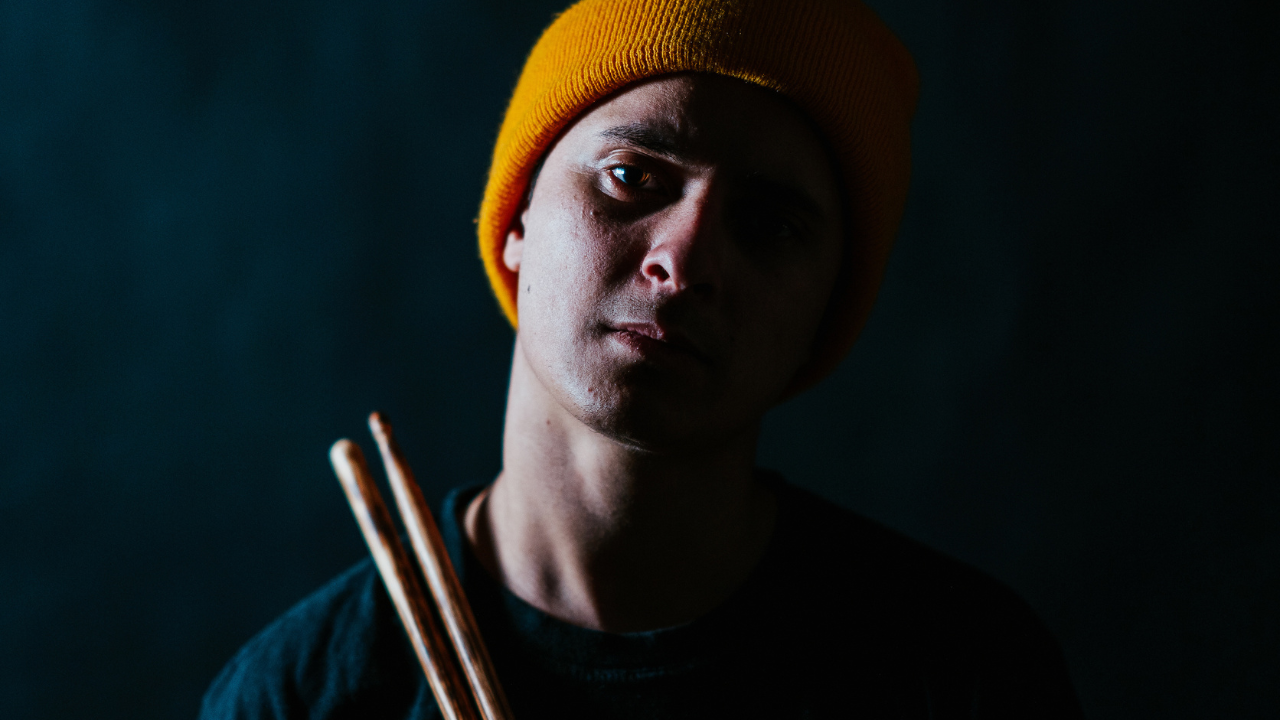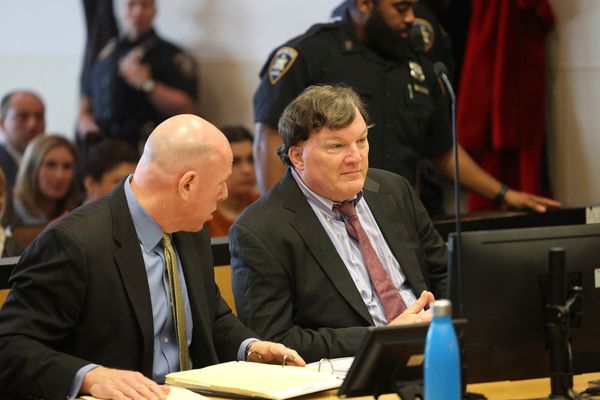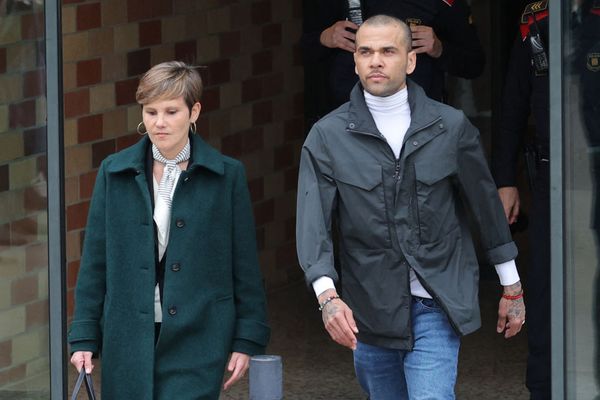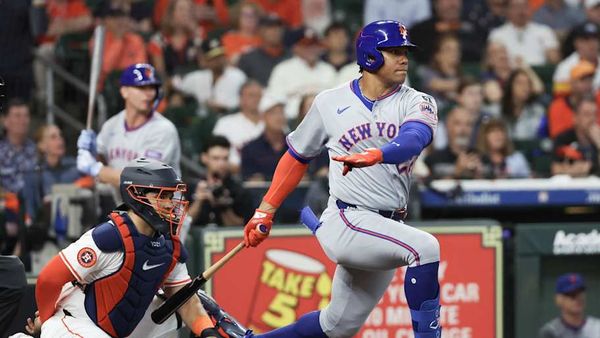
DOBBY AKA Rhyan Clapham is an artist you want to have your eye on. The Filipino and Murrawarri rapper is using music as a tool to weave his experiences, passions and connections to culture into a gripping body of work.
PEDESTRIAN.TV sat down with DOBBY ahead of his upcoming performance at Carriageworks, chatting about hip hop as a career, the connections between the genre and First Nations cultures, and what to champion this NAIDOC Week.
Hey Dobby! First off, can you introduce yourself?
My name is Ryan Clapham and I go by the rapper name DOBBY. I’m a proud Filipino and Murrawarri musician, Filipino on my mother’s side and Murrawarri on my father’s side.
You started performing in 2019, what inspired you to start making music?
I’ve always had a love for hip hop and then I started really taking it into more of a professional level. Around that time I really started taking on that identity, and it was a big step because there’s a lot of fear with it.
It went from hobby to professional career and that’s a weird, awkward stage, but I feel like I’ve grown with that transition. It’s not one sort of act, it was a bunch of little different things where I stumbled into this gig, or I took up this opportunity or said yes to this particular job or something. And then as that happened, I went, “oh I’m really doing this,” I guess I’m in this world now.
How does it feel to rap about Country? To create music about the rivers of Brewarrina for example?
It feels like everything. It’s the marriage of hip hop culture and my feeling of belonging to that. It’s feeling at home within hip hop and bringing it to my family’s culture, my family’s history and my community that I am so blessed and privileged to belong to.
Without making it too deep, or as deep as it needs to be, but this is what our ancestors fought for. It’s one of those little things that shows our resistance and our cultural knowledge can transform and meld into different ways to exist, and I believe hip hop is a massive part of that.
I’m very blessed and humbled to be one of those people that are doing the work. But through hip hop, whether it be language reclamation, whether it be ecological, like pointing the fingers towards ecological Indigenous frameworks, in terms of the rivers [in Brewarrina]. Whatever I can do as a musician to play that part.
I chatted with Munkimuk (AKA the Grandfather of First Nations hip hop) about the overlap between First Nations cultures and hip hop culture in terms of telling stories and using dance and graff to share stories too. What are your thoughts on the crossover between the two?
I do a lot of workshops and lectures and what I always say is that exact same thing.
We look at the four elements of hip hop culture being breakdancing, DJing, rapping or MCing and also graffiti or street art. Those four things are so fundamental in what culture is. We see that reflected so obviously in Aboriginal cultures or just cultures in general, but especially in Aboriginal culture.
We’ve got our DJ and that’s the didg player, or the clap sticks, or boomerangs. We’ve got our breakdancing which is corroboree, it’s how we come together and how we perform ceremony.
Then the body ochre, that’s our street art in terms of representing who we are and where we’re from… And then of course oral storytelling is our MCing.
So all of this stuff so obviously goes hand in hand, and it’s no wonder we see so many amazing, talented Aboriginal and Torres Strait Islander rappers that do what they do and teach culture through hip hop because it lends hand to it so effortlessly.
With knowledge being the fifth. The fifth element of hip hop is knowledge and none of those things wouldn’t mean anything without that knowledge, and it’s the same for our culture as well.
Read More: A Bunch Of Blak-Owned Fashion & Art Businesses For You To Spend Your Cashola At: Hip Hop & First Nations Cultures Share A Theme Of Resistance & We Should All Know More About ItFor somebody who might not be across the First Nations hip hop community, can you share how you feel to be part of it? And what it looks like to you?
It’s a blessing and a privilege and just such an excitement to see what we’re doing with hip hop in this country.
I feel like we’re on the precipice of a really amazing wave. We’re already starting to see our mob reaching international levels everywhere… So this stuff is going to catch up and I really hope that when it does happen, people don’t act so surprised, because you’ll look so dumb.
You should have been there. Now is the time to be proud.
And for NAIDOC Week this year, the theme is ‘For Our Elders.’ How do your elders inspire you when you’re making music?
Even just the start of this week getting to catch up at Carriageworks with different aunties who came to do Welcome [to Country], and just keeping in mind throughout this week the people that have paved the way for us.
For us to be able to comfortably play these gigs and say these things that we say on the stage and speak our language even, like our elders would be punished for speaking their language.
There’s also so much loss of that language as well and loss of stories. I think of the elders back in Weilmoringle and Brewarrina and we’re still picking up the pieces, but there’s so much pride, strength and resilience. But we’re also dealing with that loss, so I’m very lucky to be able to do what I’m doing in this place
I’m very thankful for my Murrawarri elders, our elders of Brewarrina and Weilmoringle, and where I stand as well on Gadigal country. It’s very important what we get to do.
NAIDOC Week started in 1938 as a day of mourning, and that’s changed since that first year decades ago, and now it feels more like a week of celebration and spotlighting. How do you feel media and public figures approach NAIDOC week? And do you think that approach needs to change?
There’s just so much celebration… It’s so special, it’s like Blak Christmas. It’s a week of celebration and celebrating Blak performance, Blak dancers, Blak singers, Blak arts. I heard the other day that the First Nations’ arts industry brings in $4.9 billion to the economy each year.
So I think the next step is realising that this week should really be year long because the demand is there. It’s ever growing and there’s more of a spotlight on it. The talent and the quality, and also the significance culturally for our collective identity is there.
This week keep your ears and eyes open, and go see some Blak events and buy Blak. Listen, watch and buy consciously and be part of that change. We’re here to have conversations and we just need you to come to us.
The post Hip Hop & First Nations Cultures Share A Theme Of Resistance & We Should All Know More About It appeared first on PEDESTRIAN.TV .







